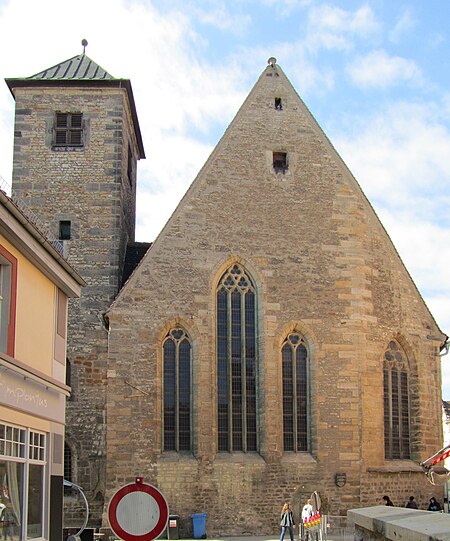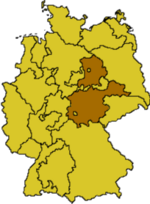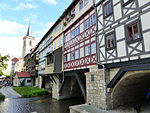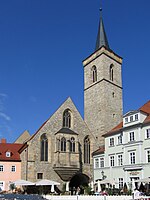St Michael's Church, Erfurt
13th-century churches in Germany16th-century Lutheran churches in GermanyChurch buildings in ErfurtGothic architecture in GermanyLutheran churches converted from Roman Catholicism ... and 2 more
Protestant churches in ThuringiaUse British English from May 2022

St Michael's Church (German: Michaeliskirche) in the historical centre of the city of Erfurt in Thuringia, Germany, is a Gothic church building. It belongs to the Evangelische Stadtmission Erfurt and is the university church of the University of Erfurt.
Excerpt from the Wikipedia article St Michael's Church, Erfurt (License: CC BY-SA 3.0, Authors, Images).St Michael's Church, Erfurt
Michaelisstraße, Erfurt Altstadt
Geographical coordinates (GPS) Address Nearby Places Show on map
Geographical coordinates (GPS)
| Latitude | Longitude |
|---|---|
| N 50.979444444444 ° | E 11.028333333333 ° |
Address
Michaelisstraße
Michaelisstraße
99084 Erfurt, Altstadt
Thuringia, Germany
Open on Google Maps











